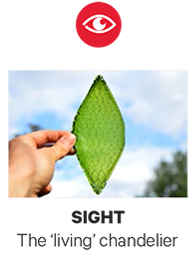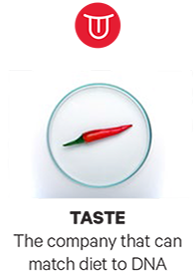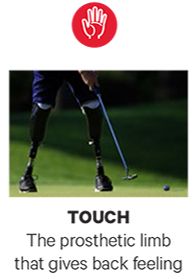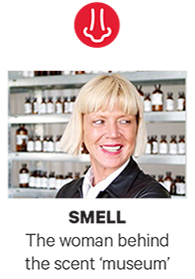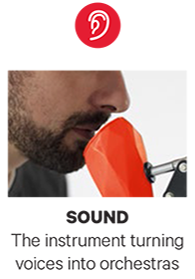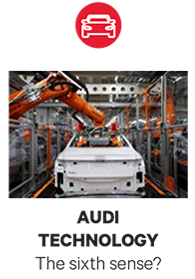Follow your nose: the science of capturing smell
In the fourth of our series on how technology is being inspired by the senses, Audi discovers why an ‘odour artist’ wants us all to wake up and smell the world
A yellow sticky note on Sissel Tolaas’s computer screen reads: “Collaboration is the new competition.” This motto weaves itself through all her projects, whether working with Ikea to distil the scent of Sweden or teaming up with the Military History Museum in Dresden to recreate the smell of the First World War: the result of which was so repulsive it made visitors feel sick.
Tolaas, who was born in Norway, speaks eight languages, holds four degrees and defies any attempt at easy categorisation. She has been described as anything from smell anthropologist to an odour artist. “There is a whole world to smell and a whole world I want to teach how to smell,” she explains.
But why this dedication? “Humans need to breathe to live, 24,000 times a day,” she says. “And with every breath we inhale invisible smell molecules that provide us with information we wouldn’t otherwise notice. It goes straight to our emotion and memory centres. The nose knows long before any other sense starts to process. If you’re asleep and your house is on fire, it’s the smell, not the heat, that wakes you. In our visually dominated world, people have forgotten about the power of smell. I want to help them rediscover the wealth of important information it communicates.”
“If you’re asleep and your house is on fire, it’s the smell, not the heat, that wakes you”
Tolaas’s Berlin laboratory contains various archives. One houses 7,000 smells captured during seven years of fieldwork – which she has used to create the “smellscapes” of 35 cities including London and Shanghai.
The process behind Tolaas’s work is one that’s tried and tested by the perfume industry. “After I identify the source of a smell, I capture the molecules it emits and send them off to be analysed. I get back huge amounts of data about the prime molecules and amounts, and I then try to recreate the smell from the core notes up.”
Her genius lies in the way she utilises the technology. Where the perfume industry might recreate scents to mask what are considered bad odours, Tolaas’s “all smells are created equal” mentality means she focuses on capturing things that are often covered up or ignored – sweat, pollution or decaying leaves. Rather than being used for aesthetics, her work has other functions, including warning of dangers – as when smells are added to hazardous gases that would otherwise be odourless.
24,000
The average number of breaths that a person takes every day (two seconds to inhale; three seconds to exhale)
Tolaas says that smell is also the most efficient tool we have for remembering and can even be used to bring back suppressed memories. “I was working with a traumatised child in California and all the doctors knew was that it had something to do with cigarettes. I created about 25 smells and, on number 15, the boy could suddenly see the room where his mum had been killed by being hit with an ashtray. The therapists were then able to develop a treatment plan.”
But with all of the potential that lies neatly bottled in Tolaas’s collection, there are some applications that are out of bounds. “When I was working on the installation The FEAR of Smell – the Smell of FEAR at the Massachusetts Institute of Technology, the US secret service approached me to help track terrorists by their odour. I said no. I would never use it to do anyone harm.”
Stay safe in a car that senses danger
Just as our sense of smell helps us avoid danger, Audi’s world-class innovations aim to make driving safer and more stimulating than ever.
Smell the difference. The passenger compartment of the Audi A7 features air-vent technology that ionises pollutants to improve the air quality. This can reduce fatigue and sharpen awareness and can be monitored via an air quality screen.
Eyes in the back of your head? Not quite, but something close: rear cross traffic assist alerts you to approaching vehicles when you’re reversing. It can even activate your brakes if things get too close for comfort.
Built-in technology that keeps you on side. Audi side assist helps you change lanes safely. It uses radar sensors in the rear bumper to routinely monitor traffic in the driver’s blind spot and any vehicle approaching rapidly from behind. If the driver signals to pull out and there is danger, the LED warning signal lights up.
MAKING SENSE OF OUR SENSES
We cannot control everything that takes place on the road ahead of us (or behind), but we can use our senses to react in the optimal manner. Audi is integrating technology to enhance our senses, and in this series we are introducing inspiring individuals who are doing the same in the fields of sight, taste, touch, smell and sound.
To stay up to date with Audi’s innovation, explore the range, book a test drive or request a brochure, visit audi.co.uk. For more on the senses go to driving.co.uk/six-senses



